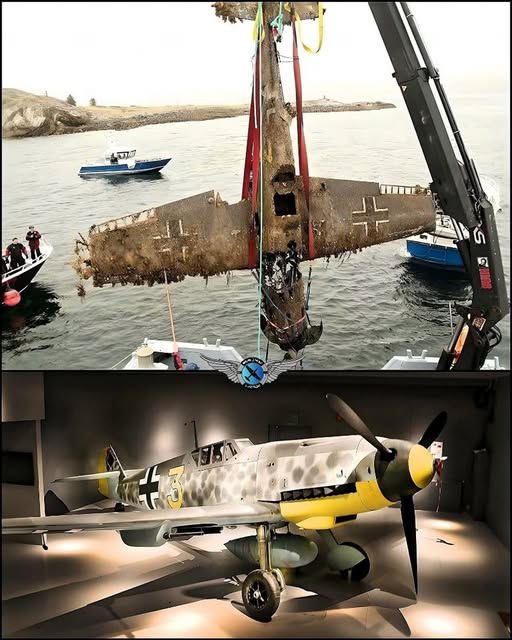Echoes of War: The Lost Bf-109 Unearthed Near Røvik, Norway

Near the quiet town of Røvik, Norway, history has resurfaced from beneath the frozen earth. Archaeologists and historians have uncovered the wreckage of a Messerschmitt Bf-109, one of World War II’s most iconic German fighter aircraft. This legendary plane, which met its tragic fate on March 24, 1943, now lies as a silent testament to the courage, skill, and peril of aerial combat over the cold northern skies.
A Legendary Aircraft Rediscovered

The Bf-109 was renowned for its speed, maneuverability, and precision, serving as a cornerstone of Germany’s Luftwaffe during World War II. The wreck near Røvik, remarkably preserved by Norway’s icy terrain, provides a rare opportunity to examine both the aircraft’s design and the historical circumstances of its final mission. Twisted metal, faded insignia, and scattered components evoke vivid images of dogfights, aerial maneuvers, and the immense skill required to pilot these machines under extreme conditions.
Archaeologists are meticulously documenting the site, photographing and cataloging each fragment of the aircraft. Preservation of metal and surviving instruments allows experts to study the technological innovations of the era and better understand the circumstances that led to the crash. The site’s cold, remote conditions have effectively frozen the aircraft in time, offering a snapshot of history that is both poignant and scientifically invaluable.
Piecing Together a Pilot’s Story

Beyond the aircraft itself, researchers aim to uncover the human story behind the mission. Historical records indicate that the pilot was engaged in a strategic operation over northern Norway when the aircraft was lost. By analyzing the wreckage, its position, and the surrounding terrain, historians hope to reconstruct the events that led to the Bf-109’s demise. Artifacts such as instruments, personal items, and the plane’s logbooks may provide insights into the pilot’s experience, shedding light on the challenges faced during combat flights in extreme northern conditions.
Historical and Cultural Significance
The discovery of the Bf-109 wreckage bridges the past and present, connecting contemporary observers with the lived experiences of World War II pilots. Each fragment tells a story of innovation, bravery, and the human cost of conflict. Such finds not only honor those who served but also provide tangible evidence for historians, educators, and aviation enthusiasts to study the technical and strategic aspects of wartime aviation.
Moreover, the site contributes to Norway’s rich history during World War II, illustrating the challenges faced by both Axis and Allied forces in northern Europe. The discovery also highlights the importance of ongoing archaeological efforts in preserving and interpreting war-related artifacts, ensuring that history remains accessible and meaningful for future generations.
Conclusion
The unearthing of the Messerschmitt Bf-109 near Røvik, Norway, is a remarkable reminder that history is never truly lost. Preserved in ice for decades, the aircraft serves as a silent monument to bravery, technological innovation, and the enduring legacy of World War II. As archaeologists and historians continue to study the site, the wreck provides invaluable insights into the era’s aviation, military strategy, and human experience, ensuring that the echoes of war continue to be heard and remembered.











